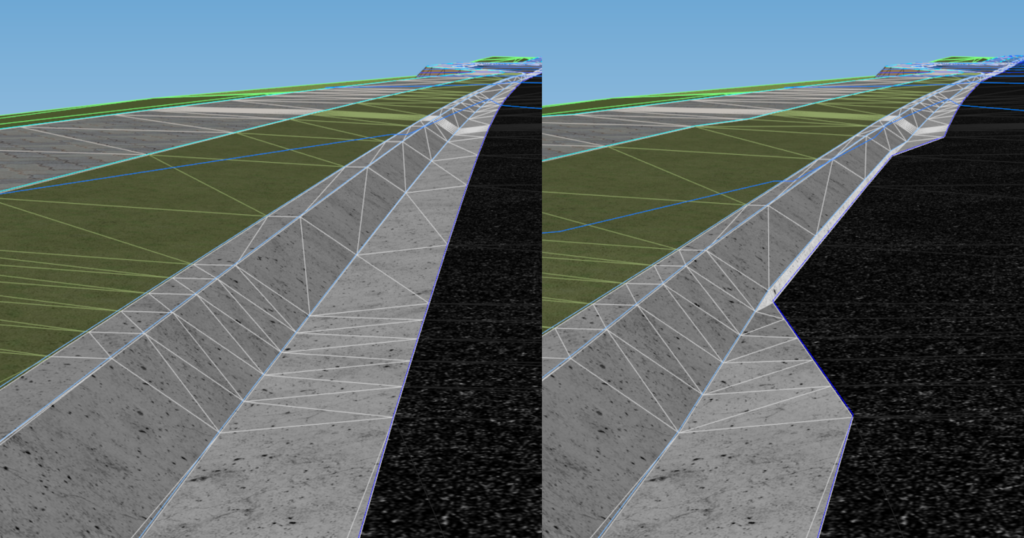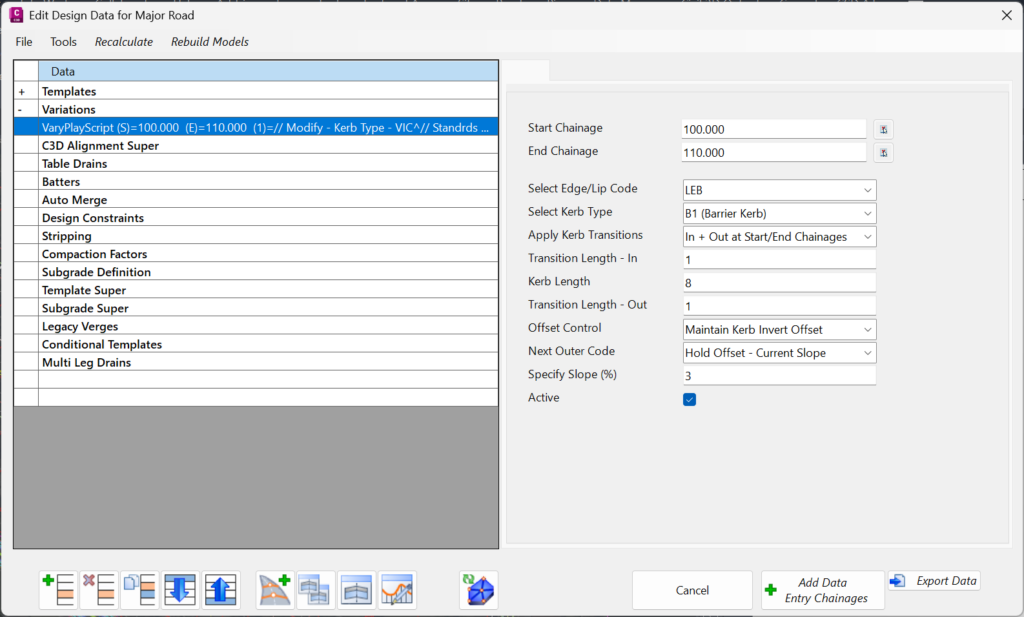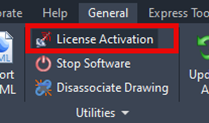Civil Site Design/Corridor EZ v26 delivers a major upgrade to its Custom Variations functionality with the introduction of Standard Kerb Transitions.
Since v25, Custom Variations have been a core feature of Civil Site Design/Corridor EZ, allowing users to apply conditional logic and geometry overrides to cross sections at specified chainages. With v26, this functionality is significantly expanded through the inclusion of pre-configured kerb transition scripts. The Standard Kerb Transitions are installed with the software (not available via downloads) and provide ready-to-use profiles tailored to specific Australian States and Territories, such as Queensland, New South Wales, and others.

Each transition script contains a group of kerb types that can be applied directly within the Custom Variation. Users simply double-click on a variation, select Custom Variation, and navigate to the Standard Kerb Transitions folder. From there, designers can assign start and end chainages, define in/out transition lengths, and maintain control over key feature codes like edge of bitumen, lip, or invert.
What sets this apart is the precision with which users can control geometric behaviour. Variations can hold offsets, maintain slopes, or apply fixed slopes to adjacent codes—ideal for complex urban design environments. This ensures seamless integration of kerb changes while preserving surface integrity and modelling accuracy.

At times you may need to move your standalone Civil Site Design or Stringer license due to hardware failure, formatting of a workstation (PC) or moving to another PC. Here are the instructions on how to complete this process both if the license is accessible or inaccessible.
Revolutionise your Civil Site Design with Project Assist: Automating medians and splitter islands effortlessly. This AI-powered tool streamlines island integration by detecting alignments, automatically trimming road strings, and enhancing precision with minimal manual input.
Check out the performance improvements we have introduced for all Civil 3D Corridor creators out there!
Check out the performance improvements we've introduced into Civil Site Design V24.20 when you're working in the Vertical Grading Editor window.




